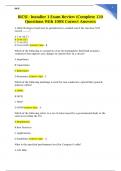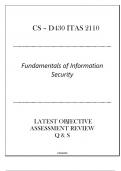Class notes
Lectures/Hoorcolleges History of the Middle East 2 (1500-present) midterm 2 (final exam)
- Course
- Institution
Lecture notes from lectures 7-12 for History of the Middle East 2 (1500-present). Learning material for the second midterm (final exam). This subject is part of the bachelor Middle Eastern Studies/ Midden-Oostenstudies at Leiden University. Exam grade: 8,0. A comprehensive summary of the litera...
[Show more]












